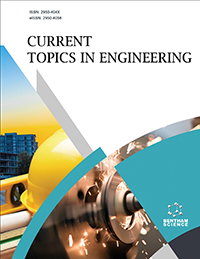
Abstract
Background: Diabetes is one of the most escalating endocrine disorders around the global countries. Researchers are paying more attention towards herbal drugs for treating these chronic ailments. As per the statistics, the incidence of diabetes is increasing not only in adults but also in neonates. Herbal plants like Okra and Neem have been used in India since the ages to treat various kinds of ailments.
Methods: The methodology includes the preparation of granules from the okra gum and neem extract, which is compressed into tablets. The nanoparticle dispersion of Pioglitazone is prepared by using the 2% w/v polyvinyl pyrrolidone (PVP) and 1% sodium lauryl sulphate (SLS), which are then sprayed on the drug-free tablet substrate. This process enhances the area of the Pioglitazone particles and thereby increases the bioavailability of the drug. The spraying of the nanoparticles on the surface of the substrate reduces the aggregation of the particles, which is a drawback of nanoparticles.
Results: The results show that the release rate is increased 2.14 times compared with the pure drug by depositing Pioglitazone nanoparticles on a tablet substrate composed of the okra mucilage and alcoholic extract of Neem. It also shows that there is a remarkable reduction in the glucose levels in vivo when compared with the product formulated by employing the traditional wet granulation technique.
Conclusion: This study concluded that the addition of herbal antidiabetic molecules as excipients can improve the therapeutic effect significantly. Better antidiabetic activity may be obtained with the deposition of hydrophobic antidiabetic drugs on herbal antidiabetic components.
Keywords: Pioglitazone, Nanoparticles, Herbal excipients, Antidiabetic activity, Diabetes mellitus, Pharmacological approaches.
[http://dx.doi.org/10.2165/00002512-199609020-00001] [PMID: 8820792]
[http://dx.doi.org/10.2174/157339912799424528] [PMID: 22268395]
[http://dx.doi.org/10.1007/s001250051188] [PMID: 10333041]
[http://dx.doi.org/10.3390/ijms21176275] [PMID: 32872570]
[http://dx.doi.org/10.20546/ijcmas.2018.710.232]
[http://dx.doi.org/10.12691/jfnr-7-2-8]
[http://dx.doi.org/10.1002/jsfa.2740280609]
[http://dx.doi.org/10.1002/masy.201600019]
[http://dx.doi.org/10.5958/0974-360X.2018.00967.8]
[http://dx.doi.org/10.3390/plants10081683] [PMID: 34451728]
[PMID: 25374435]
[http://dx.doi.org/10.22270/jddt.v10i5.4393]
[http://dx.doi.org/10.1186/s12951-020-00704-4] [PMID: 33225973]
[http://dx.doi.org/10.1016/j.matpr.2020.11.726]
[http://dx.doi.org/10.1016/j.jddst.2020.101674]
[http://dx.doi.org/10.3390/ijms23052522] [PMID: 35269665]
[http://dx.doi.org/10.22270/jddt.v1i1.24]
[http://dx.doi.org/10.22270/jddt.v1i1.24]
[http://dx.doi.org/10.1016/j.drudis.2013.05.007] [PMID: 23707660]
[http://dx.doi.org/10.1016/j.jksus.2022.102297]




























